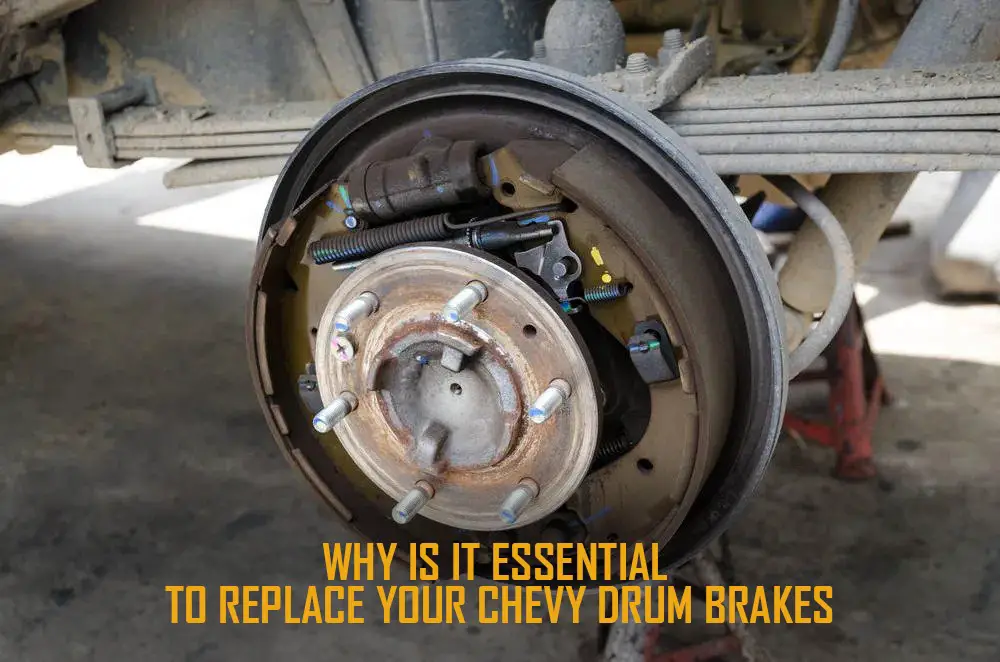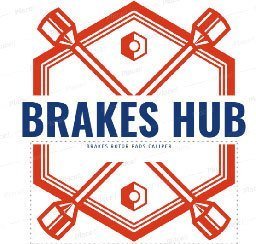How To Replace Chevy Drum Brakes With Diagram
Chevy drum brakes are a common type of brake and are very easy to replace. Chevy drum brakes are an essential part of your car’s braking system. Replacing your Chevy drum brakes is a great way to save money and improve your car’s safety. You can do it yourself with a few tools and some patience.
This article will show you how to replace your Chevy drum brakes in just a few simple steps.
Why is it essential to replace your Chevy drum brakes?

Chevy drum brakes are an essential part of your car’s braking system. If your car has drums, replacing them when they wear out is important. Here are three reasons why:
1. Chevy drum brakes provide stopping power. Pressing the brake pedal causes the shoes inside the drums press against the drums. This friction creates the stopping power you need to slow down or stop your car.
2. Worn-out drum brakes can cause brake fade. As the shoes inside the drums wear down, they create less friction. The result can be spongy brakes that feel less responsive and lead to longer stopping distances.
3. Drum brakes can also cause premature tire wear. If the drums are worn out, they may not be able to release all of the heat generated by braking action.
What are the signs that your Chevy drum brakes need to be replaced?
If you’re unsure whether your Chevy drum brakes need to be replaced, there are a few signs you can look out for.
The most obvious sign is when your brake pedal feels much harder than usual to press down. This means that the car needs more force to stop, which could result in an accident if you drive at high speeds.
You may also experience a reduction in braking efficiency, which could cause you to skid or slide when trying to stop.
Additionally, damage to the braking system can signify that it’s time for a replacement. This can include physical damage to the rotors or cracks in the discs and excessive wear on the pads and shoes.
Any time you notice any of these symptoms, it’s best to take your car to a mechanic and have them inspect it further.
What are some tips for replacing your Chevy drum brakes?
You should follow a few tips when replacing your Chevy drum brakes.
You should start by ensuring you have the right tools. You’ll need a socket wrench, a ratchet, and a variety of other sockets and wrenches.
Second, make sure you disconnect the battery before starting work. This will prevent any electrical shorts from occurring.
Finally, be very careful when removing the old brake drums. They can be extremely heavy and difficult to handle.
What are the steps to replacing Chevy drum brakes?
Follow these steps to replace your Chevy’s drum brakes:
The first step to replacing your Chevy drum brakes is to remove the wheel. Once you’ve removed the wheel, you’ll want to pull off the lug nuts holding the wheel onto the hub. Then, you’ll want to take off the brake caliper.
Next, you’ll want to disconnect the brake lines from the master cylinder. After this, you’ll want to remove the brake line connectors from the back of the master cylinder. Finally, you’ll want to loosen the bolts connecting the brake booster to the master cylinder.
Once everything is disconnected, you’ll want to move the brake booster forward so that you can access the brake master cylinder. Install the new master cylinder after removing the old one. Make sure to tighten the bolts before reinstalling the wheel.
Finally, you’ll want to reconnect the brake lines to the master cylinder. Tighten the bolts and then reinstall the wheel.
How often should you replace your Chevy drum brakes?
Drum brakes are an important part of your Chevy’s braking system. They are responsible for stopping the wheels from rotating. Unfortunately, the drums and shoes wear out over time and must be replaced.
How often you need to replace your Chevy’s drum brakes depends on a few factors.
The first is how often you use your brakes. If you live in a stop-and-go city or do a lot of highway driving, you will replace them more frequently than someone who rarely uses their brakes.
The second factor is how well you maintain your brakes. If you regularly check and adjust your brake shoes, they will last longer than if you don’t.
Regularly cleaning your drums will also help extend their life.
What are the benefits of replacing your Chevy drum brakes?

There are many benefits to replacing your Chevy drum brakes. When new brakes are installed, you can expect improved stopping power, a longer brake life, and less wear on your tires.
In addition, proper maintenance of your brakes is vital for the safety of yourself and your passengers. Any time you notice that something is wrong with your brakes, be sure to have them serviced as soon as possible.
Brakes are essential to your car and should be checked regularly to ensure they are in good condition. You may have questions about your brakes or need them serviced, please consult our FAQs or contact a mechanic.
Are there any risks involved in not replacing Chevy drum brakes?
If you’re not planning on replacing your Chevy’s drum brakes, you may risk yourself and others. Here are some of the dangers of driving with old, worn-out brakes:
- You could have a brake failure. A faulty brake system could suddenly give out while you’re driving, leaving you without any way to stop. This could lead to a serious accident.
- Your stopping distance will increase. With old brakes, it will take you longer to stop than it would with new brakes. This means that you’ll need more distance to come to a stop, which could be dangerous if you’re on the highway or in a crowded area.
- You’ll put extra wear and tear on your tires. Old brakes cause friction between the tire and road surface, causing your tires to wear down faster.
- You’ll reduce the lifespan of your vehicle. The longer you drive with old brakes, the greater chance there is that you’ll damage your brakes and shorten their lifespan.
- You could get into an accident. If you’re driving with old brakes, you might not be able to stop.
What can be done to extend the life of Chevy drum brakes?
Chevy drum brakes are essential to your vehicle, and proper maintenance is key to keeping them in good condition. In spite of this, you can take a few simple steps to extend the life of your Chevy drum brakes.
First, make sure they’re clean and free of debris. This will help prevent corrosion and wear.
Secondly, check the brakes regularly for wear and tear. If you notice any problem areas, have them repaired or replaced as soon as possible.
Finally, use the correct brake fluid when topping off the reservoirs. By using the wrong type of fluid, you can damage your brakes and shorten their lifespan.
You can follow these simple tips to ensure that your Chevy drum brakes will last many years.
How to Replace Chevy Drum Brakes FAQs:
-
What are Chevy drum brakes?
Chevy drum brakes are a type of brake that uses a drum to stop the vehicle. As the drum is attached to the wheel, the brake shoes press against the drum causing friction and stopping the wheel. There are many Chevy drum brakes, but they all work the same way.
-
Some symptoms of a bad drum brake
There is a possibility that if you find any of these symptoms, it is likely that your drum brakes are bad and need to be replaced:
1. The car pulls to one side while braking
2. You hear grinding noise when you brake
3. You feel a vibration in the steering wheel or floorboard when braking
4. Soft or spongy brake pedal when depressed
-
I would like to know where I can find a diagram for replacing my Chevy drum brakes?
If you need a diagram for replacing your Chevy drum brakes, there are a few places you can look. Your best bet is to check the owner’s manual for your specific model of Chevy. If you don’t have the owner’s manual, you can try looking online on the Chevy website or a site like AllDataDIY.com.
When looking for diagrams, it’s important to ensure you get ones specific to your Chevy model. Otherwise, you might end up with inaccurate information. However, once you have the right diagram, replacing your drum brakes should be relatively straightforward.
-
What is the average time it takes to replace drum brakes?
It takes about an hour to replace the drum brakes. This includes removing the old brake shoes and drums, cleaning the area, and installing new brake shoes.
The process is slightly different if you are also replacing the wheel cylinder. In that case, you would need to remove the old wheel cylinder and install a new one before installing the new brake shoes.
Conclusion:
In conclusion, knowing how to replace your Chevy’s drum brakes is essential. This will ensure that your car is operating safely and smoothly.
Using these steps, you’ll have new brakes in no time. Make sure you take care when working on your brakes, and always consult a professional if you have any questions or concerns.
